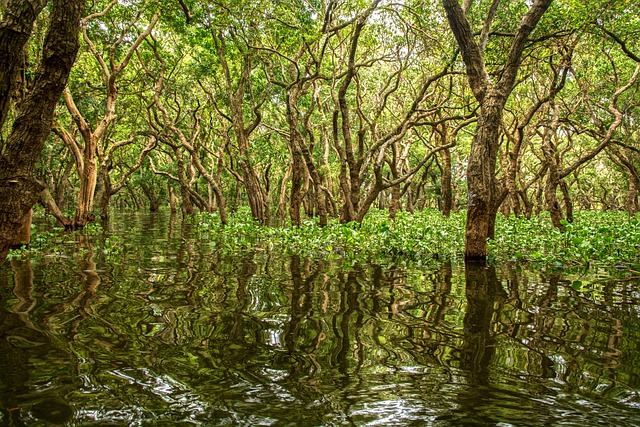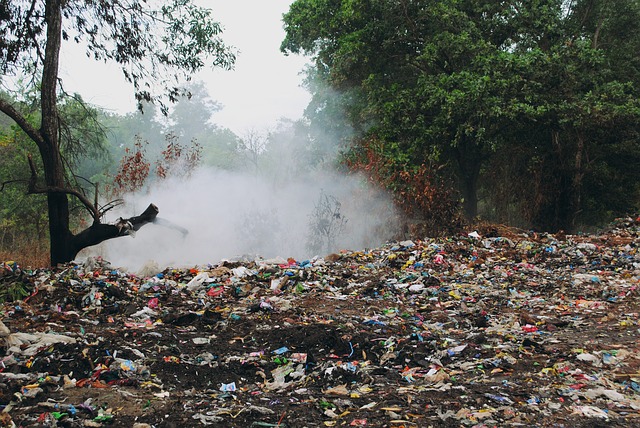Introduction
Mangroves: Mangroves are a type of forest that includes shrubs and trees. These types of forests grow along with coastal areas. There are approximately 80 species of mangroves found all around the world. The preferred environment for mangroves includes saline/ brackish water usually near the edge of the river, swamp water, and low oxygen soil.
Check out: Freshwater Ecosystem of Pakistan – Climatic Biome
Mangroves of Pakistan
The coasts of Pakistan have a wide diversity of mangroves mainly located in Balochistan and Sindh.
In Balochistan, the limited mangroves are present along Gawadar Bay, Kalmat hor, Milani Hor.
In Sindh, mangroves are covering an area of 600,000 hectares and present along the delta of the Indus River.
Mangroves in Pakistan are under the control of the Board of Revenue, Qasim Authority, and the Sindh Forest Department.
You might also like: Estuaries of Pakistan – Location, Importance, and Environmental degradation
Types of Mangroves in Pakistan
In Pakistan, there are four types of mangroves, out of which 90% of all the mangroves are composed of Avicennia marina. The four types are listed below.
- Avicennia marina – Grey Mangrove – White Mangrove
- Rhizophora mucronata – Loot Roop Mangrove – Red Mangrove
- Ceriops tagal – Spurred Mangrove
- Aegiceras corniculatum – Black Mangrove
Also check out: Freshwater Wetland Ecosystem of Pakistan – Climatic Biome.
Importance of Mangroves
Mangroves hold great importance from ecological, economic, and livelihood points of view.
- Mangroves act as a natural habitat by providing food to a diverse variety of marine organisms. It should be conserved because sea creatures in Sindh are feed on animal species that live in mangroves. It is a good source of economically important fisheries such as prawns, crabs, and fishes.
- People living nearby areas get animal fodder and woods from mangroves.
- Mangroves absorb carbon dioxide up to 18% more efficiently than other plant species.
- It acts as a natural barrier towards floods, sea storms, and land erosion. Sediments get accumulated in mangroves.
- Mangrove forests provide protection to a natural ecosystem.
Also check out: Pakistan’s Living Indus Initiative And Its Importance
Environmental Degradation of Mangroves
The environmental degradation of mangroves in Pakistan has raised environmental concerns. The government of Pakistan is facing backlashes for the announcement of a housing scheme in Bundle Island because this island is famous for dense tamer forests. Besides this, it is being said that the government is aware of the impacts of human-induced climate change and doing efforts to restore mangroves along the coasts of Pakistan.
The common factors that are threatening the mangroves in Pakistan are listed below.
- Human-induced climate change and global warming are accountable for sea-level rise and this is posing a serious threat to mangroves.
- Urban sprawl along the coasts of Pakistan has led to shrinking mangroves. You might be interested in reading: Mangroves under Threat in Pakistan by $50bn Housing Project.
- Marine biodiversity of mangroves is being destroyed by overfishing ultimately leading to a global fishing crisis.
- Mangrove swamps of Pakistan are destructed by deforestation. Trees are chopped down for animal fodder and wood.
- Freshwater diversions induce changes in the water salinity that in return damages the mangroves.
- Now the major factor that contributes to the environmental degradation of mangroves in Pakistan is human-led environmental pollution such as industrial effluents, fertilizers runoff, pesticides, sewage, oil spills, synthetic compounds, etc.
For more information on this topic, read: Mangroves and their Destruction – Causes, Effects, and Conservation Techniques
Conclusion
Mangroves are crucial for the sustenance of a healthy ecosystem. Millions of people all around the world depend on mangroves for their livelihoods. It is home to diverse biodiversity and provides protection to coasts from natural storms. However, the environmental degradation of mangroves by human activities is threatening the survivability of marine biodiversity. Afforestation drives are only helpful if existing mangroves are conserved and preserved from environmental degradation.
Also check out: 12 Beautiful Islands of Pakistan
I hope you all liked this post! Please comment below if you have any suggestions, comments, or feedback! We at #envpk love hearing from our readers! Thanks!





5 Comments
Perfectly Written. Thanks for the share. How about using drones for the plantation and monitoring drive.
Thanks! That’s a great idea and would be very beneficial for the environment.
A very informative content. I will suggest to add measures to protect the mangrove forests and their status in Pakistan. Also add the NGO’s involved in its protection and conservation.
Thank You.
Great suggestions, thank you! We will definitely try to add this info.
Regards,
… Well written… Such informative post are less likely on digital platform…. Thanks for this piece of writing on forest sector of the country